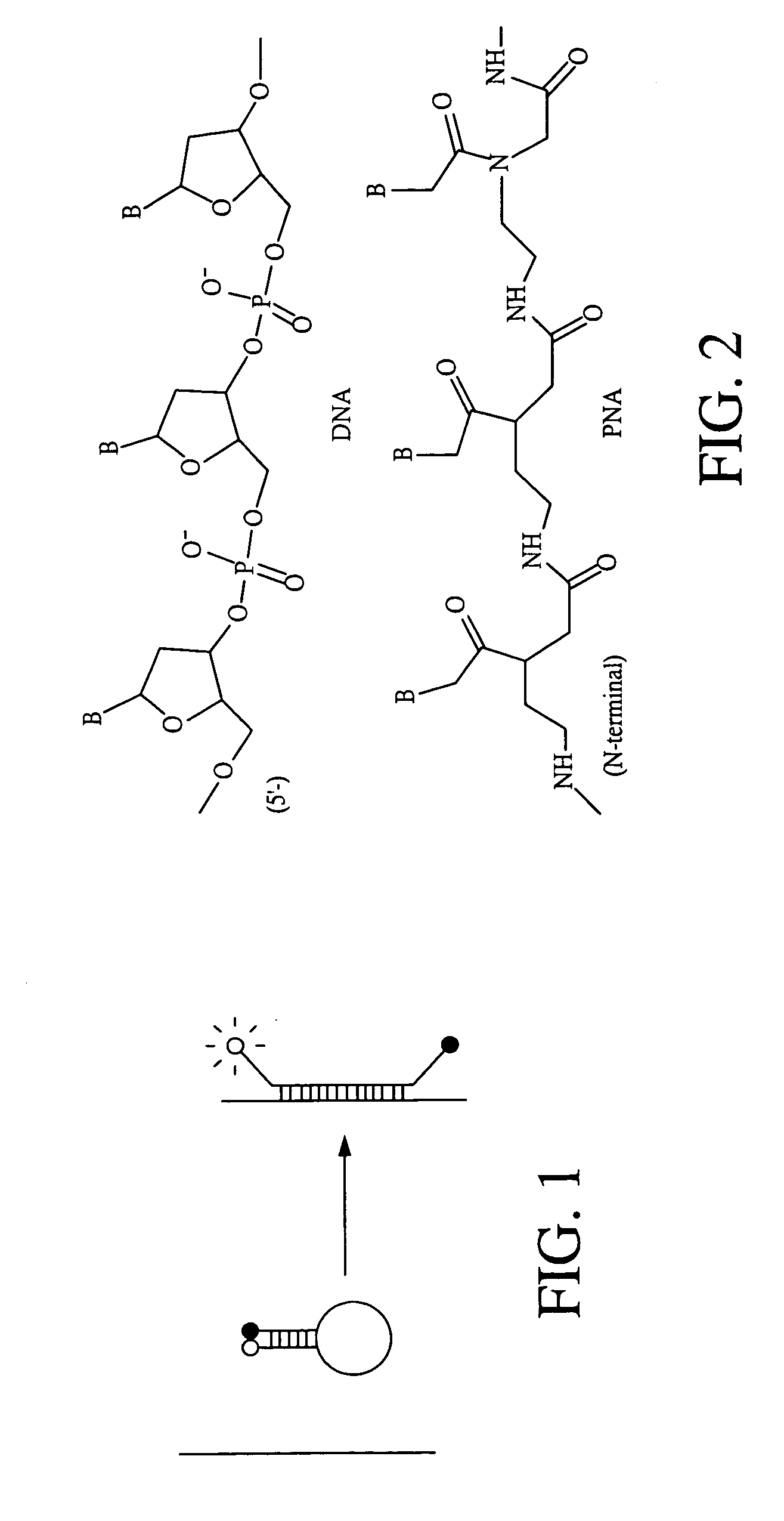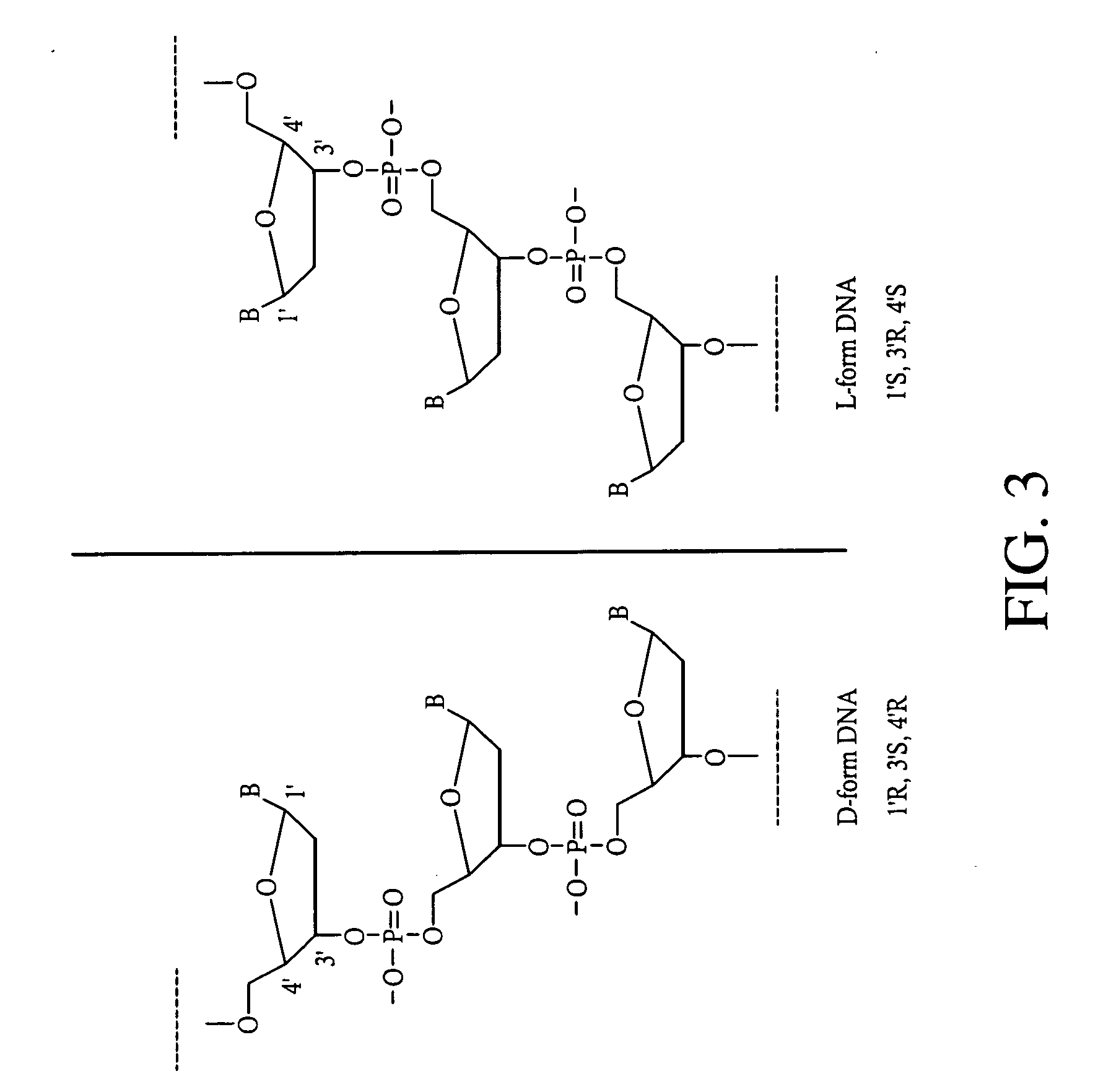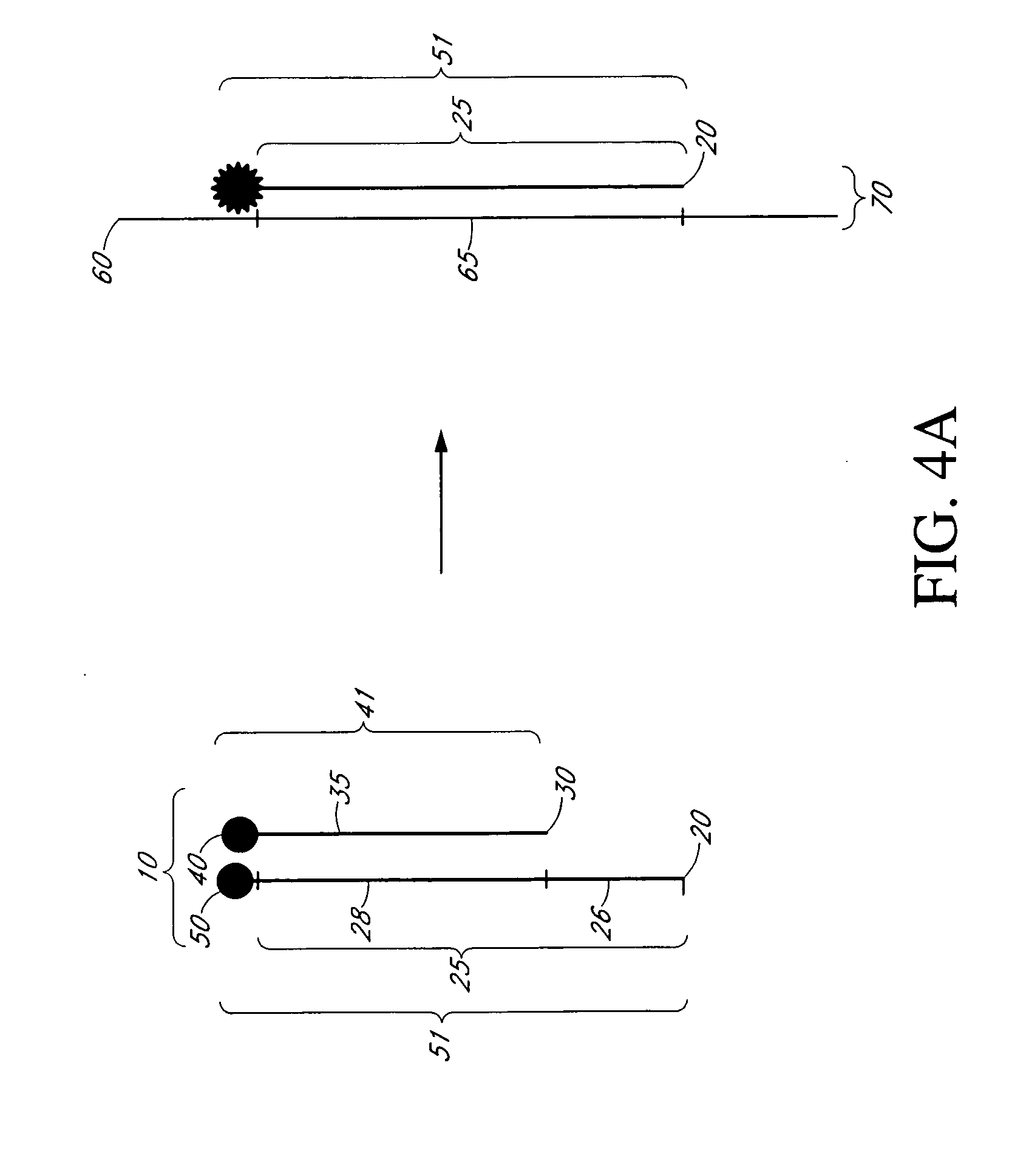Analog probe complexes
a probe complex and probe technology, applied in the field of probe-based nucleic acid sequence detection, analysis and quantification, can solve the problems of low copy number gene product detection rate, dna beacons are subject to degradation, dna beacons are not desirable for live cell imaging, etc., and achieve the effect of hybridization
- Summary
- Abstract
- Description
- Claims
- Application Information
AI Technical Summary
Benefits of technology
Problems solved by technology
Method used
Image
Examples
example 1
[0125] This example demonstrates one method for making a self indicating analog probe complex. PNA will be synthesized using a modified DNA synthesizer. Alexa 680 (Molecular Probe), a fluorescent probe, will be linked to the N-terminal of the PNA and will be purified by reverse phase HPLC. The fluorophore Alexa is selected because of its long photobleaching lifetime and its long emission wavelength (705 nm) away from autofluorescence. The complementary L-DNA strand will be labelled at the 3′ end with “BLACK HOLE QUENCHER”™. The two segments will be allowed to hybridize together.
example 2
[0126] This example demonstrates how the signal to noise ratio for the analog probe complex can be determined. Target sequence DNA will be added into a solution of a self indicating analog probe complex of Example 1. A fluorescence increase will be observed, which will indicate the hybridization of the analog probe complex with the target sequence. The S / N is estimated to be about 220.
example 3
[0127] This example demonstrates one method by which the analog probe complex's resistance to both enzymatic degradation and protein binding can be determined. To a solution of self-indicating analog probe complexes, an amount of a DNA nuclease will be added: Following this addition, and at various periods of time thereafter, the fluorescence of the solution will be measured. This level of fluorescence will indicate the amount of binding and nucleotide degradation, with an increase in fluorescence indicating an increase in degradation. Following this, target sequence will be added to the solution to verify that other events have not either altered the DM or the analog probe complex. The addition of the target sequence will result in an increase in fluorescence, similar to that seen in Example 2.
Immobilization of an Analog Probe Complex to a Surface:
[0128] One or more analog probe complexes can be immobilized to a surface. The probe can be immobilized to the surface using the well...
PUM
| Property | Measurement | Unit |
|---|---|---|
| temperature | aaaaa | aaaaa |
| volume | aaaaa | aaaaa |
| temperature | aaaaa | aaaaa |
Abstract
Description
Claims
Application Information
 Login to View More
Login to View More - R&D
- Intellectual Property
- Life Sciences
- Materials
- Tech Scout
- Unparalleled Data Quality
- Higher Quality Content
- 60% Fewer Hallucinations
Browse by: Latest US Patents, China's latest patents, Technical Efficacy Thesaurus, Application Domain, Technology Topic, Popular Technical Reports.
© 2025 PatSnap. All rights reserved.Legal|Privacy policy|Modern Slavery Act Transparency Statement|Sitemap|About US| Contact US: help@patsnap.com



